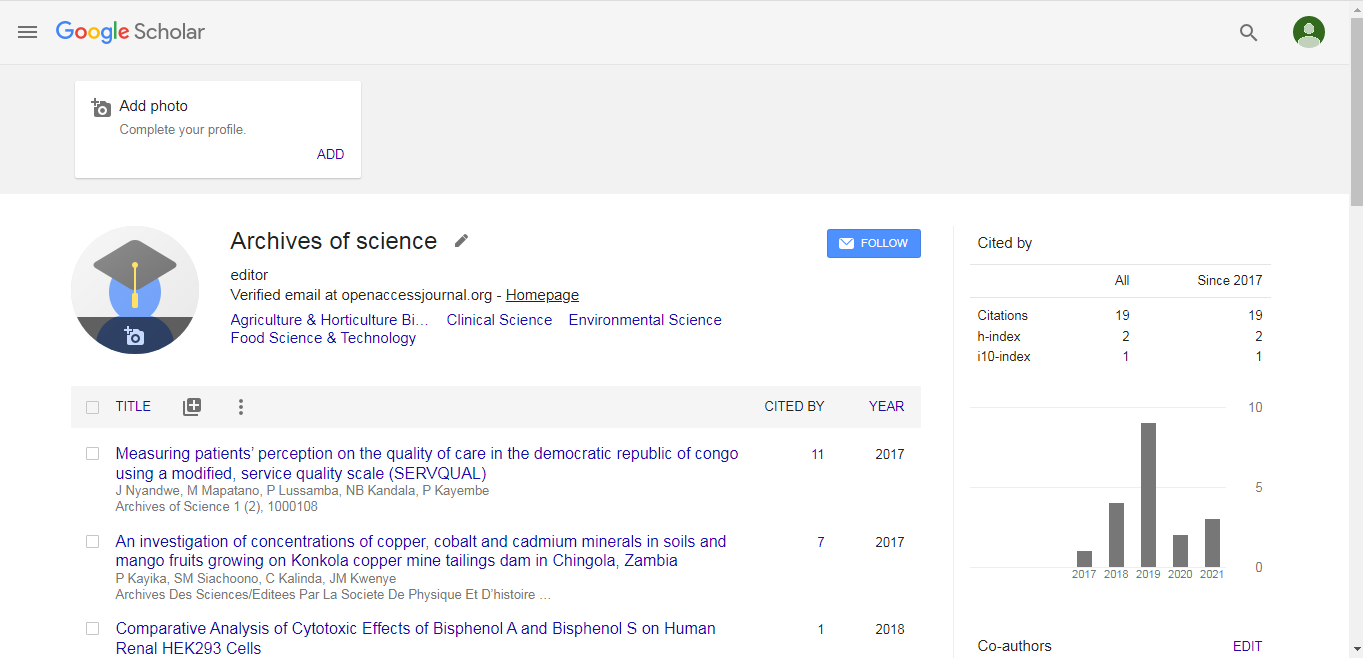Materials Chemistry & Nano 2019: Two dimensional lateral complicated structure - Duan Xiangfeng - University of California
*Corresponding Author:
Copyright: © 2019 . This is an open-access article distributed under the terms of the Creative Commons Attribution License, which permits unrestricted use, distribution, and reproduction in any medium, provided the original author and source are credited.
Abstract
Two-dimensional layered materials consisting of graphene, MoS2 and WSe2 have attracted big interest these days as semiconductor after Si and becoming an essential cloth platform in condensed count number physics and current electronics and optoelectronics. The research thus far but typically depends on robotically exfoliated flakes which usually be constrained to easy 2D substances, specifically 2D lateral complicated structure cannot be prepared via exfoliation approach. Much like the traditional semiconductor method, complex structure which includes controlling the distance distribution of composition and electronic structure of dimensional semiconductor fabric is important to construct all present day electronic and optoelectronic devices, which include transistors, p???N diodes, photovoltaic/photodetection devices, mild-emitting diodes and laser diodes. And many physics phenomenon can handiest seem in greater complicated shape. To completely explore the capacity of this new class of substances, it is essential to expand rational synthetic strategies of two dimensional lateral complex shape, together with lateral heterostructure, multi hetero shape, superlattice, quantum properly and so forth., With a fairly small lattice mismatch (~4%) among MoS2 and MoSe2 or WS2 and WSe2, it is viable to provide coherent MoS2???MoSe2 and WS2???WSe2 heterostructures via a lateral epitaxial method. Our studies suggest that simple sequential boom regularly fails to supply the favored heterostructures because the brink growth front may be without problems passivated after termination of the first boom and publicity to ambient conditions. To keep a sparkling, un passivated edge boom front is vital for successive lateral epitaxial growth. To this give up, we have designed a thermal CVD technique that permits in situ switching of the vapoursegment reactants to allow lateral epitaxial increase of single- or few-layer TMD lateral heterostructures. We used this technique to realize the growth of compositionally modulated MoS2??? MoSe2 and WS2???WSe2 lateral heterostructures. From the we can see the formation of WS2???WSe2 lateral heterostructures absolutely. The WS2???WSe2 lateral hetero systems with each p- and nkind traits can also permit us to assemble many other useful devices, for instance, a CMOS inverter. It is the optical photo of the invert constructed the usage of the WS2???WSe2 lateral hetero structures and the curves of the output???Input and the voltage benefit. The voltage advantage reaches as huge as 24. In a regular sequential-boom procedure for 2D lateral heterostructure, the excessive thermal degradation or uncontrolled nucleation throughout the temperature swing among sequential boom steps represents the important thing obstacle to reliable formation of monolayer heterostructure or other lateral complex structure .We designed a changed CVD machine. We used an opposite glide from the substrate to the source at some point of the temperature swing among successive increase steps A ahead flow from the chemical vapor source became handiest carried out at the precise boom temperature. With such opposite float, the present monolayer substances will no longer exposure to high temperature and chemical vapor supply on the temperature increasing and reducing steps to decrease thermal degradation and put off out of control homogeneous nucleation. With a high diploma of controllability in every step, the integrity and quality of monolayer heterostructures may be well preserved after multiple sequential increase steps. We used our technique to start with for the overall synthesis of a huge range of 2D crystal heterostructures. We additionally grew extra complicated compositionally modulated superlattices or multi heterostructures, the range of periods and repeated spacing can be easily various at some stage in boom. HADDF-STEM analysis of the atomic shape of the lateral heterostructures and Multi heterostructures display the atomically sharp interface can be definitely determined. Two-dimensional (2D) transition metal dichalcogenide (TMDC) heterostructures were proposed as ability applicants for a diffusion of programs like quantum computing, neuromorphic computing, solar cells, and flexible field powerful transistors. The 2D TMDC heterostructures at the existing degree face difficulties being implemented in these packages due to lack of huge and sharp heterostructure interfaces. Herein, we cope with this trouble through a CVD technique to develop thermodynamically stable heterostructure of 2H/1T′ MoSe2–ReSe2 the usage of traditional transition metal segment diagrams as a reference. We reveal how the thermodynamics of blending in the MoReSe2 machine at some point of CVD increase dictates the formation of atomically sharp interfaces among MoSe2 and ReSe2, which may be confirmed by way of high-decision scanning transmission electron microscopy imaging, revealing zigzag seleniumterminated interface between the epitaxial 2H and 1T′ lattices. Our work presents beneficial insights for information the stableness of 2D heterostructures and interfaces among chemically, structurally, and electronically one-of-a-kind stages.

 Spanish
Spanish  Chinese
Chinese  Russian
Russian  German
German  French
French  Japanese
Japanese  Portuguese
Portuguese  Hindi
Hindi 